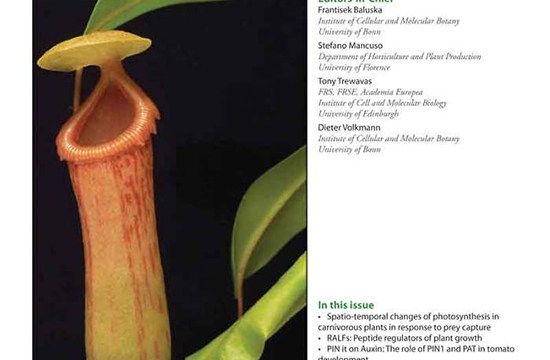
linkedin post 2020-10-09 04:48:15
NETWORKS. "Animals have their network of neuron synapses, electrophysiological circuits and memory, but plants have their network of chloroplasts connected by stromules, PEPS circuits transduced by bundle sheath cells and cellular light memory. It is suggested that plants could be intelligent organisms with much higher organism organization levels than it was thought before." http://www.tandfonline.com/doi/full/10.4161/psb.5.11.13243#abstract View in LinkedIn


